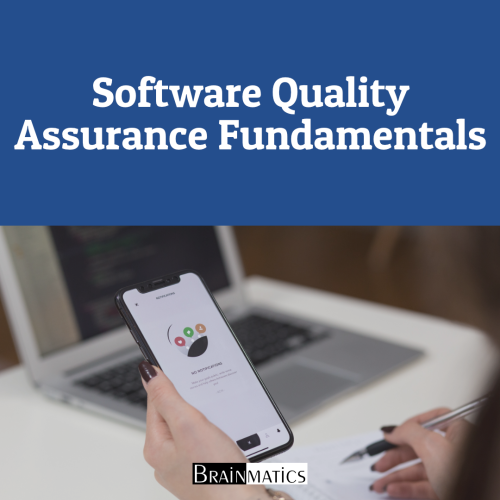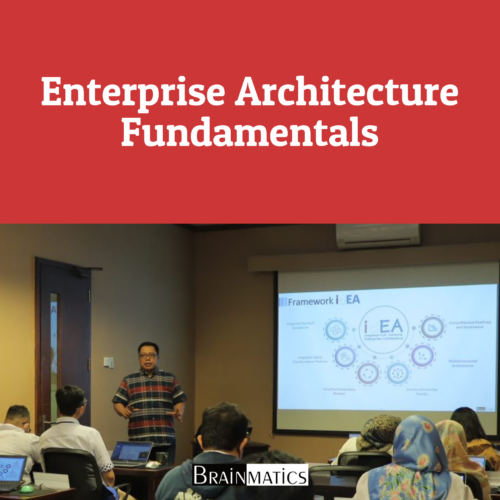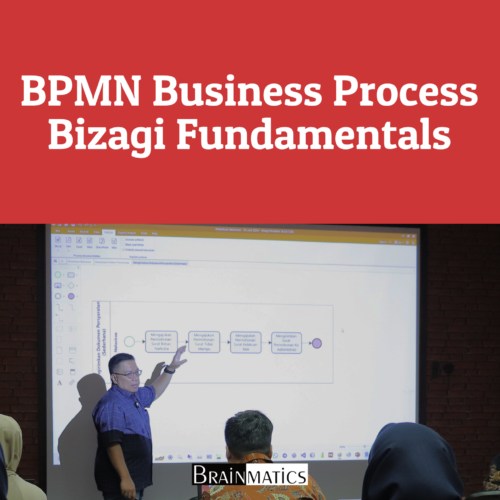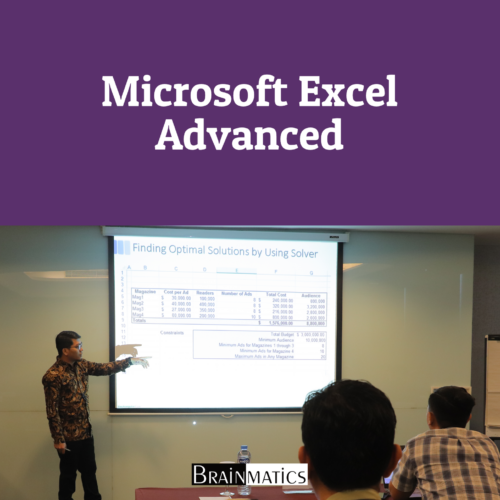![]() Dalam pengembangan Data Warehouse menggunakan Pentaho, banyak organisasi menghadapi berbagai tantangan, seperti integrasi data dari berbagai sumber, manajemen transformasi data yang kompleks, serta pengolahan data dalam skala besar secara efisien. Selain itu, sering kali terjadi kendala dalam validasi data, optimasi performa, serta kesulitan dalam memahami konsep ETL (Extract, Transform, Load) yang menjadi inti dari pengelolaan data warehouse. Tanpa pemahaman yang baik mengenai alat dan teknik yang tepat, proses pengolahan data bisa menjadi lambat, tidak efisien, dan rentan terhadap kesalahan.
Dalam pengembangan Data Warehouse menggunakan Pentaho, banyak organisasi menghadapi berbagai tantangan, seperti integrasi data dari berbagai sumber, manajemen transformasi data yang kompleks, serta pengolahan data dalam skala besar secara efisien. Selain itu, sering kali terjadi kendala dalam validasi data, optimasi performa, serta kesulitan dalam memahami konsep ETL (Extract, Transform, Load) yang menjadi inti dari pengelolaan data warehouse. Tanpa pemahaman yang baik mengenai alat dan teknik yang tepat, proses pengolahan data bisa menjadi lambat, tidak efisien, dan rentan terhadap kesalahan.
Course Data Warehouse Pentaho Fundamentals dirancang untuk memberikan pemahaman mendalam tentang bagaimana mengelola dan mengoptimalkan proses ETL menggunakan Pentaho Data Integration (PDI). Peserta akan diperkenalkan dengan konsep dasar data warehouse serta cara menginstal dan mengoperasikan Pentaho BI Suite. Selain itu,course ini juga mencakup pembuatan transformasi data, manajemen file, validasi dan pembersihan data, serta teknik terbaik dalam mengelola job flows. Peserta juga akan belajar bagaimana menghubungkan Pentaho dengan berbagai sumber data, melakukan transformasi dataset, serta memahami metadata injection untuk meningkatkan efisiensi proyek data warehouse mereka.
Selain aspek teknis, course ini juga menekankan pada praktik terbaik dalam desain dan implementasi proyek Pentaho Data Warehouse. Mulai dari pemahaman tentang model data dimensional, strategi pemuatan data ke dalam data mart, hingga metode optimasi performa dan pengelolaan proyek dalam berbagai lingkungan. Dengan mengikuti course ini, peserta diharapkan dapat meningkatkan keterampilan dalam membangun, mengelola, serta mengoptimalkan solusi data warehouse berbasis Pentaho secara efektif dan efisien.
OBJECTIVES
1. Memahami Konsep Data Warehouse dan Pentaho Data Integration (PDI)
2. Mendesain dan Menjalankan Transformasi Data
3. Mampu Melakukan Manipulasi Data dan Metadata
4. Mengoptimalkan Performa Transformasi Data
5. Mengimplementasikan Model Data Dimensional dalam Data Warehouse
AUDIENCE
1. Data Engineer
2. Data Analyst
3. Software Developer
4. ETL Developer
5. IT Manager
6. System Architect
PREREQUISITES
Tidak ada training khusus yang dipersyaratkan
CONTENT
1. Getting Started with Pentaho Data Integration
1.1. Pentaho Data Integration and Pentaho BI Suite
1.2. Installing PDI
1.3. Launching the PDI Graphical Designer – Spoon
1.4. Introducing Transformations
2. Getting Started with Transformations
2.1. Designing and Previewing Transformations
2.2. Understanding PDI Data and Metadata
2.3. Handling Errors
3. Creating Basic Task Flows
3.1. Introducing Jobs
3.2. Designing and Running Jobs
3.3. Running Transformations from a Job
3.4. Managing Files
3.5. Understanding and Changing the Flow of Execution
3.6. Knowing the Basics About Kettle Variables
4. Reading and Writing Files
4.1. Reading Data from Files
4.2. Outputting Data to Files
4.3. Working with Big Data and Cloud Sources
5. Manipulating PDI Data and Metadata
5.1. Manipulating Simple Fields
5.2. Working with Complex Structures
6. Cleansing, Validating, and Fixing Data
6.1. Cleansing Data
6.2. Validating Data
6.3. Treating Invalid Data by Splitting and Merging Streams
7. Transforming the Dataset
7.1. Sorting Data
7.2. Working on Groups of Rows
7.3. Converting Rows to Columns
7.4. Normalizing Data
8. Performing Basic Operations with Databases
8.1. Connecting to a Database
8.2. Previewing and Getting Data from a Database
8.3. Inserting, Updating, and Deleting Data
8.4. Verifying a Connection, Running DDL Scripts, and Tasks
9. Loading Data Marts with PDI
9.1. Preparing the Environment
9.2. Introducing Dimensional Modeling
9.3. Loading Dimensions with Data
9.4. Loading Fact Tables
10. Creating Portable and Reusable Transformations
10.1. Defining and Using Kettle Variables
10.2. Creating Reusable Transformations
10.3. Making the Data Flow Between Transformations
10.4. Executing Transformations in an Iterative Way
11. Implementing Metadata Injection
11.1. Introducing Metadata Injection
11.2. Discovering Metadata and Injecting IT
11.3. Identifying Use Cases to Implement Metadata Injection
12. Best Practices for Designing and Deploying a PDI Project
12.1. Setting Up a New Project
12.2. Best Practices to Design Jobs and Transformations
12.3. Maximizing the Performance
12.4. Deploying the Project in Different Environments
Course Features
- Lectures 14
- Quizzes 2
- Duration 40 hours
- Skill level All levels
- Language English
- Students 11
- Certificate Yes
- Assessments Yes










